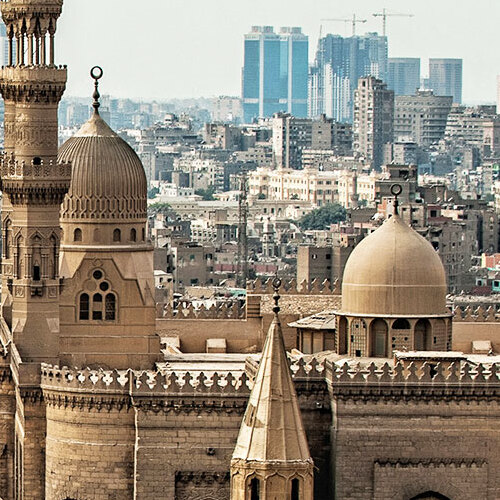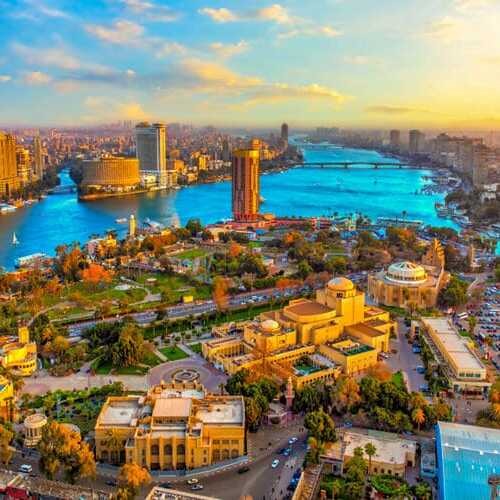No other nation in the world says ‘Welcome’ as often as the Egyptians, and every time, they mean it. While the ancient civilization of Egypt continues to amaze, contemporary Egyptians are equally remarkable.
Sharia al-Muizz li-Din Allah
Sharia al-Muizz li-Din Allah: A Timeless Boulevard of History
In the heart of ancient Cairo, where the sands of time whisper secrets of a bygone era, there exists a boulevard that transcends centuries – Sharia al-Muizz li-Din Allah. Once a bustling thoroughfare teeming with storytellers, entertainers, and the enticing aromas of food stalls, this street is steeped in the vibrant tapestry of Egypt’s history.
Its name, Sharia al-Muizz, pays homage to the formidable Fatimid caliph who, in the year 969 AD, led the triumphant conquest of Cairo, leaving an indelible mark on the city’s identity. Today, while the essence of the street remains rooted in its historical significance, it has undergone a transformation that seamlessly blends the old with the new.
As you traverse its meandering path, you’ll find newly paved walkways that guide your footsteps, and the tips of ancient minarets reach for the heavens, serving as silent sentinels of the past. During the tranquil hours of the morning, when the cacophony of vehicles subsides, you’ll have the privilege of exploring the treasures that adorn this street, uninterrupted by the hustle and bustle of modern life.
The streetscape is nothing short of awe-inspiring for first-time visitors, a sensory journey through time and culture. Even for those who have previously wandered its enchanting lanes, the extensive changes that have graced Sharia al-Muizz may require a moment of contemplation to fully absorb.
In one stretch of this historic boulevard, small stalls once offered an array of wares, from sheeshas and braziers to cooking pots for preparing the beloved Egyptian dish, Fuul (fava beans). These humble stalls, often adorned with pear-shaped vessels, soon became synonymous with the street’s identity. Over time, a captivating evolution occurred, as crescent moon minaret tops, coffee ewers, and an array of exquisite copper products joined the offerings, prompting the street’s now-famous moniker – Sharia an-Nahaseen, the Street of the Coppersmiths.
On the right flank of this venerable street lies the Mosque of Suleiman Silahdar, a mere 200 meters southward. This 18th-century architectural gem, born during the era of Mohammed Ali, bears the graceful marks of Turkish inspiration, evident in its slender minaret and elegantly curved facades. The mosque is not only a sanctuary of prayer but also a repository of culture, housing a public fountain and Quranic School (Sabil and Kuttab) tucked away in its corner.
Sharia al-Muizz li-Din Allah, with its timeless charm and historical treasures, beckons travelers to embark on a journey through Egypt’s storied past. It is a boulevard where the echoes of bygone eras still reverberate, and where every step is a step into the annals of history.
Created On May 4, 2020
Updated On July 22 , 2025
CAIRO Travel Guide
- Al-Azhar Mosque
- Al-Azhar To The Citadel
- Amir Taz Palace
- Aqsunur’s Mosque
- Bab Zuweila
- Beit Al-Harrawi
- Beit Al-Suhaymi (Al-Suhaymi House)
- Beit Zeinab al-Khatoun
- Bein al-Qasreen STREET (Between The Two Palaces {Street})
- Ben Ezra Synagogue
- Church of St. Barbara
- Coptic Cairo
- Egyptian Textile Museum
- Gawhara Terrace
- Gayer-Anderson Museum
- Ibn Tulun Citadel
- Khan Al-Khalili Bazaar (Cairo’s Most Famous Bazaar)
- Khanqah & Mausoleum of Sultan Baybars al-Gashankir
- Khanqah-Mausoleum of Farag Ibn Barquq
- Madrassa & Mausoleum of as-Salih Ayyub
- Madrassa & Mausoleum of Qalawun
- An-Nasir Mohammed Bin Qalawoon Mosque
- Madrassa And Mausoleum of Barquq
- Mausoleum of Al-Ghouri
- Midan Al-Hussein (Sayedna Al-Hussein Square)
- Mosque of Al-Hakim
- Mosque of Al-Mu’ayyad Shaykh
- Mosque of al-Aqmar
- Mosque of Amr ibn al-As
- Mosque of An-Nasir Mohammed
- Mosque of Aslam al-Silahdar
- Mosque of Ibn Tulun
- Mosque of Mohammed Ali
- Mosque of Sayyidna al-Hussein
- Mosque-Madrassa of Al-Ghouri
- Mosque-Madrassa of Sultan Hassan
- Mosque-Madrassa of Umm Sultan Sha’aban
- Museo Mevlevi
- Museum of Islamic Art
- Northern Cemetery
- Northern Enclosure
- Northern Walls and Gates
- Sabil And Kuttab Of Abdel Rahman Katkhuda
- Sabil of Muhammed Ali Pasha
- Sharia al-Muizz li-Din Allah
- The Church of St Sergius & Bacchus
- The Citadel Of Saladin
- The Complex of Sultan Ashraf Barsbey
- The Coptic Museum (The Only Coptic Museum In Egypt)
- The Egyptian Museum
- The Hanging Church
- The Khayrbek Complex
- The Mosque of Sultan Qaitbey
- The Roman Towers
- Wikala al-Bazara
- Wikala of Al-Ghouri



